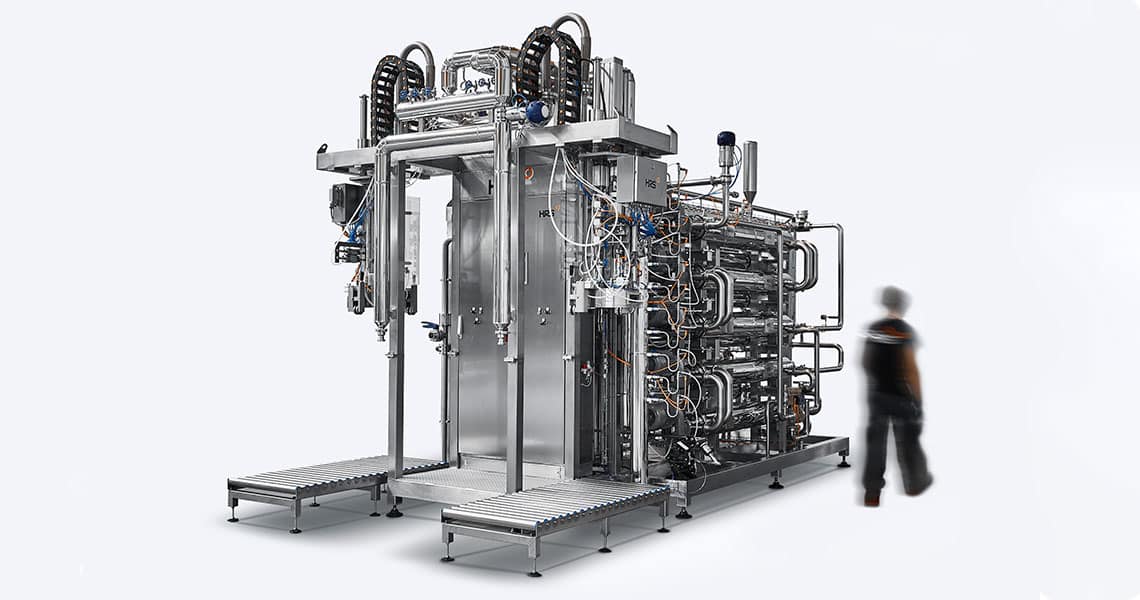Introduction to Aseptic Filling

Aseptic filling, packing and processing are at the heart of many modern food, beverage and pharmaceutical operations. Despite this, the availability of increasingly effective and autonomous aseptic filling machinery means that the actual principles are not always understood, resulting in wrongly specified equipment which does not function as intended.
The dictionary tells us that aseptic filling is ‘the filling of sterile containers with food or other materials that have already been sterilised’, but this fails to explain either the benefits of this technique for manufacturers and consumers, or the challenges in designing suitable equipment to carry out the aseptic filling correctly and efficiently.
There are different methods of aseptic filling but the two main forms involve either using hot or cold products. Hot products, which have just been sterilised using heat exchangers or autoclaves for example, are packed immediately to retain their sterility. In comparison, cold packing involves cooling of the materials after they have been sterilised and maintaining this sterility until they have been packed. In addition, there are different ways to sterilising the packaging, including the use of peracetic acid (PAA) or H2O2 gas, although in many cases pre-sterilised bags within an outer container, such as a box or drum, will be used.
Each of these different sterilisation techniques is suitable for different types of food and beverage, but in general, cold aseptic packing offers a number of benefits including:
- Improved shelf life and product safety
- Improved product quality
- Allows a wide range of different packaging to be used
There are a couple of claims for the first aseptic filling plant dating from the early 1910s, but the exact details of what was done are sketchy. The first confirmed example of ‘modern’ first aseptic filling including particulates comes with Campbell’s Soup in the mid-1980s. This was swiftly followed by other leading companies which have helped to develop the technology include Lund Dairy, Borden and Ocean Spray. In 1991 the Institute of Food technology ranked it as the top innovation in food technology, ahead of developments such as concentration, canning and freeze-drying. Today aseptic packaging can range in size from containers of few millilitres up to tanks with a capacity of 30,000 m3 used for international shipping, and improvements in recycling have overcome some of the objections to using aseptic packaging for consumer goods.
As already noted, the actual methods used to sterilise both the product and the packaging can vary greatly and will depend on a number of factors. The ‘common link’ in the production line is the actual aseptic filling machinery used to fill the containers. As with any major piece of food processing equipment, it can represent a major capital expenditure so it makes sense to spend time in making sure that the equipment you choose is fit for purpose.
As well as comparing the upfront capital expenditure and long term running and maintenance costs, it is important that any aseptic filling machinery is both fast enough to match the pace of your production process (and any potential increase in output) and flexible enough to cope with the full range of products which the line may handle. It also needs to be flexible in terms of the packaging used. While retail and trade packaging will often be handled by different machines, being able to handle a range of pack sizes such as 200 litre bags in drums and bag in box sizes from 3 to 25 litres will greatly improve adaptability.
When it comes to the type of food or product handled, different machines will generally be designed for different types of material, but if possible choose a machine such as the HRS AF Series with different nozzle sizes, allowing you to handle both liquids and liquids with particles, such as diced fruit and vegetables purees, concentrates, juices, pastes, sauces, soups and other delicate products. By combining the HRS AF Series with a tubular heat exchanger (double, triple or multi-tube type), it is possible to process a wide range of food products with and without particulates, from low to high viscosities.
As with other food processing equipment, the physical, chemical and organoleptic characteristics of the product will dictate the design of the filling machinery, with factors including product viscosity, particulate size, thermal sensitivity, volatility and likelihood to cause fouling all helping to define the final equipment specification. It is also important to make sure that the filling technology is integrated with the thermal treatment, so for example using the same technology provider for both the heat exchanger/s and the aseptic filler/s will ensure not only physical compatibility, but also that a fully sterile environment is maintained between the two processes.